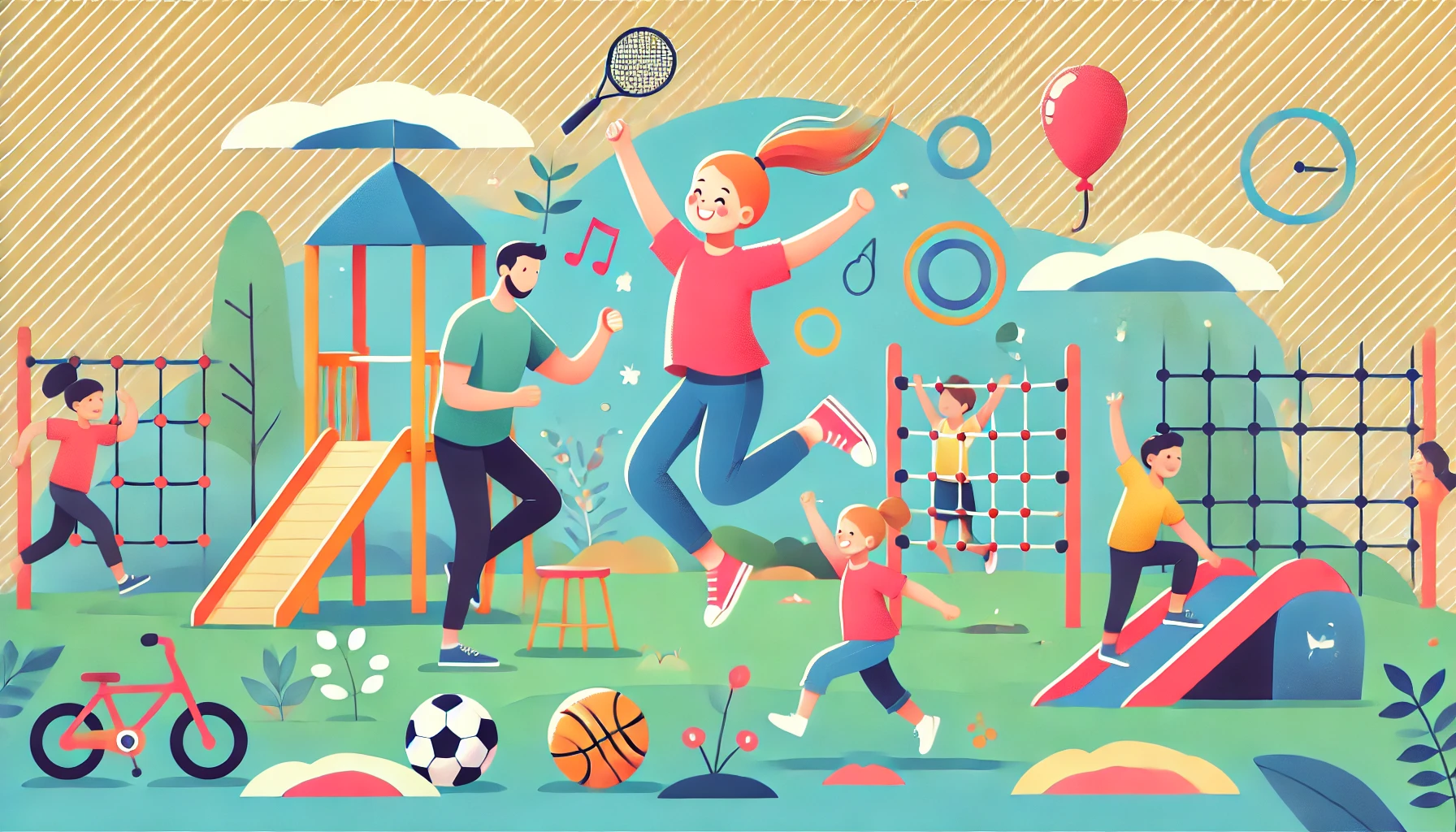How to Teach Young Children About the Importance of Exercise and Staying Active
Helping young children understand the importance of exercise and staying active supports their physical health, emotional well-being, and social development. Kids are naturally full of energy, and guiding them toward fun, purposeful movement encourages lifelong habits of health and fitness. In this article, we’ll explore practical, age-appropriate ways to teach kids about the benefits of physical activity and how to enjoy moving their bodies every day.
Why Teaching Exercise Matters
- Promotes healthy growth – Supports strong bones, muscles, and heart health.
- Boosts mood and energy – Releases endorphins that help children feel happy and calm.
- Improves sleep – Helps kids fall asleep faster and sleep more deeply.
- Builds social and motor skills – Encourages teamwork and coordination.
- Establishes lifelong habits – Encourages a healthy lifestyle from a young age.
1. Teach Kids What Exercise Means
Introduce the idea that exercise is simply moving the body in a way that helps it stay strong and healthy.
Activity Idea:
- Use kid-friendly language: “Exercise is anything that gets your body moving and your heart pumping.”
- Give examples: “Running, jumping, dancing, swimming, or playing ball.”
- Watch short videos of kids doing different exercises and talk about what each movement does.
What Kids Learn:
- That exercise is fun and comes in many forms.
- How movement helps their body work better.
- The idea that being active is part of everyday life.
2. Make Movement a Game
When exercise is playful, kids stay engaged and motivated.
Activity Idea:
- Play games like “Simon Says” with fitness moves (e.g., jump, stretch, squat).
- Try obstacle courses using furniture, pillows, and toys.
- Use animal movements: “Can you hop like a frog or crawl like a bear?”
What Kids Learn:
- That exercise can be joyful and imaginative.
- How different muscles are used in various movements.
- The value of making physical activity part of play.
3. Encourage Outdoor Play
Being outside encourages natural movement and exploration.
Activity Idea:
- Go for a daily walk or nature hike and look for things to observe.
- Set up a game of tag, soccer, or hide and seek in the yard or park.
- Let kids ride bikes, scooters, or jump rope in safe areas.
What Kids Learn:
- That nature is a great place to move and play.
- How outdoor time boosts their energy and mood.
- The benefits of fresh air and unstructured movement.
4. Set a Good Example
Children copy what they see—when parents are active, kids are more likely to be active too.
Activity Idea:
- Exercise together by going on walks, stretching, or dancing.
- Talk about your own goals: “Moving my body helps me feel better!”
- Invite your child to join you in a mini workout or yoga session.
What Kids Learn:
- That movement is a normal and important part of life.
- How to enjoy fitness as a family.
- The power of leading by example.
5. Build Exercise Into Daily Routines
Make activity part of your child’s normal schedule.
Activity Idea:
- Start the day with a few minutes of stretching or dancing.
- Encourage movement breaks between learning or screen time.
- Do a mini “dance party” before dinner or a walk after meals.
What Kids Learn:
- That they can stay active even in short bursts.
- How movement helps with focus and energy.
- The importance of making activity part of everyday life.
6. Talk About Why Movement Is Important
Help kids connect how they feel to the movement they do.
Activity Idea:
- Ask, “How do you feel after running or jumping?”
- Talk about how exercise helps their heart, muscles, and brain.
- Use simple comparisons: “Just like we charge our tablets, our bodies need movement to recharge.”
What Kids Learn:
- How exercise affects their energy, mood, and strength.
- Why movement is necessary for health.
- How to make choices that support their bodies.
7. Celebrate All Kinds of Movement
Every child is different, and not all kids enjoy the same types of physical activity.
Activity Idea:
- Let them try different options: dancing, swimming, climbing, martial arts, yoga.
- Encourage them to choose their favorite way to move.
- Celebrate effort, not performance: “You kept going and had fun—that’s what matters!”
What Kids Learn:
- That it’s okay to move in ways that feel good to them.
- How to build confidence through trying new things.
- The joy of moving for their own enjoyment.
8. Reinforce With Encouragement and Praise
Positive feedback helps children associate movement with pride and confidence.
Activity Idea:
- Say: “You did a great job jumping for a whole minute!”
- Use a movement tracker to celebrate activity days with stickers or stars.
- Ask, “What was your favorite way to move today?”
What Kids Learn:
- That their efforts to stay active are appreciated.
- How to reflect on their experiences and enjoy physical activity.
- The motivation to stay active regularly.
Final Thoughts
Teaching young children about the importance of exercise and staying active helps them build strong bodies, develop good habits, and find joy in movement. By making activity fun, routine, and rewarding, parents can support their children in developing a lifelong love for being active and healthy.
